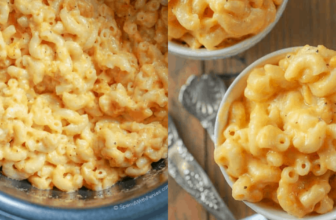 When you hear the word wellness, what do you picture?
When you hear the word wellness, what do you picture?
Yoga pants and green juice? Organic produce? High-end essential oils and crystals? A trendy retreat in the mountains? A perfectly curated morning routine on Instagram?
For many women—especially those of us navigating midlife—this is what wellness has been sold to us as: sleek, expensive, aspirational, and always just out of reach unless we’re willing to buy, hustle, or shrink ourselves to get there.
But the truth? This version of wellness is a trap.
In today’s $4.5 trillion wellness industry, we’re told that if we just drink the right supplements, follow the right diet, wear the right clothes, and stick to the right routine, we’ll finally arrive at feeling whole, happy, and healthy. But what we’re really being sold is a never-ending loop of not-enoughness.
Especially for midlife women, the Industrial Wellness Complex has zeroed in on our insecurities—aging skin, changing bodies, emotional overwhelm—and packaged them into problems to be fixed.
In this essay, we’re calling bullshit on that narrative.
We’re exploring how the modern wellness industry has commodified self-care, numbed our emotional health, and trained us to believe we are a constant project. And we’re asking the deeper question: What if true wellness isn’t something you buy—but something you reclaim?
How We Got Here
Somewhere along the way, our conception of wellness became more shallow and commodified.
The wellness industrial complex has always been linked with healthy food and beverages, curated attire, and access to exclusive retreats and spas.These are the easy, clean, Instagrammable parts of what wellness can bring to our lives.
Wellness, as it’s commonly accepted, is an active, ongoing pursuit that holds out the promise of an ideal. And that ideal can be yours—if you spend the right amount of money and use the right products.
The dark side? This model requires us to stay in a constant state of improvement. Who we are right now is never enough. There’s always something to fix.
Wellness has been reduced to a commodity—something you can buy. A problem that always needs a solution, preferably in the form of a high-end artisanal product. And more often than not, it’s reduced to just physical wellness: the endless chase to rock a bikini, lose the last ten pounds, or believe that juice cleanses will ward off disease.
Self-Love Is Bad for Business
Here’s the thing: the wellness industrial complex doesn’t want you to love yourself.
If we all suddenly did, the industry would collapse.
It doesn’t want you to accept your body shape, your skin tone, your sexuality, or your age. As Aubrey Gordon, co-host of the podcast Maintenance Phase, puts it: “You’re supposed to want to be thinner, younger, whiter, and blonder.”
And now? Midlife has become the newest battleground. It’s like the wellness industry suddenly realized women over 50 exist—and they have money to spend. So where do they want us to invest that money?
In procedures, products, and potions that promise to erase our age.
What We’re Losing in the Process
When we hyper-focus on the physical, we let our mental and emotional wellness atrophy.
Many of us don’t know what it feels like to be ourselves anymore. We numb with information, with content, with consumption. We don’t know what rest really looks like. And we’re not great at naming our emotions.
A study led by Brené Brown found that most adults can only identify three emotions: happiness, sadness, and anger. (Meanwhile, researcher Marc Brackett, Ph.D., author of Permission to Feel, says there are at least 144.)
Because we lack emotional support—both personally and systemically—we turn to coping mechanisms: alcohol, drugs, shopping, binge-watching. Not to heal, but to disconnect.
Ironically, wellness itself can become a form of numbing. We get fixated on perfection. We treat ourselves like a project. We forget how to offer ourselves grace.
And it sometimes seems that’s exactly where the wellness industry wants us: zoned out on our couches, endlessly buying our way to “better.”
That way, we’re less likely to notice the gutting of women’s healthcare, or the deep inequality in access to wellness support.
What If We Flipped the Script?
What if we turned this whole thing on its head?
What if wellness wasn’t something handed down to us by brands and influencers—but something created by us, for us?
Imagine that.
We could start by accepting ourselves. Just as we are. Think of the time, energy, and money we’d save if we stopped chasing impossible standards.
We could create space to focus on our emotional and mental well-being, not just our physical form. We could shift from individual responsibility to collective care. We could build wellness communities that are accessible to all.
We’d remember that self-worth has nothing to do with the number on a scale or the size of our pants.
I’m 55. I’m divorced. I’m sober. I’m not supposed to love myself. But, I do.
I’m supposed to want to change my appearance. To regain my youth. To get rid of the laugh lines and the furrowed brow. I’m supposed to want surgery to “look better.”
But I don’t. I like who I am.
I’ve watched brilliant, beautiful women beat themselves up for missing a day on their fitness calendar or failing to hold themselves to a rigid intermittent fasting schedule. I’ve seen us blindly follow gurus and influencers instead of checking in with ourselves and asking what we really need.
One thing we’re rarely asked to do?
Slow down. And remember who we already are.
Let’s do that instead. You with me? —Krysty
Trending Products





